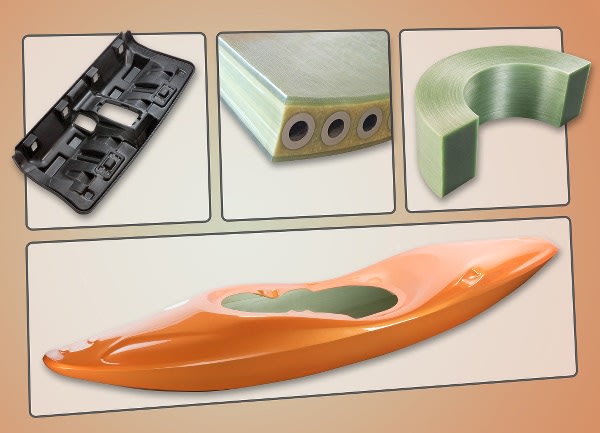 As a supplier and development partner for composite applications involving polyurethanes, epoxy resins and thermoplastics, BASF will be participating in the "JEC Composites Show", which runs from March 11 to 13, 2014 in Paris, Hall 7.2, Booth F 51. This trade fair is considered one of the world's most important exhibitions for specialty materials.
As a supplier and development partner for composite applications involving polyurethanes, epoxy resins and thermoplastics, BASF will be participating in the "JEC Composites Show", which runs from March 11 to 13, 2014 in Paris, Hall 7.2, Booth F 51. This trade fair is considered one of the world's most important exhibitions for specialty materials.Automotive lightweighting
BMW i3 seat pan manufactured from carbon fibers and a PU matrixThe self-supporting rear seat pan for the BMW i3 was produced using the Elastolit polyurethane system from BASF by the automotive supplier F.S. Fehrer Automotive, for which the company was honored with one of the SPE awards in the "body interior" category in 2013. Here, carbon fiber materials were used in combination with a polyurethane matrix for the first time in a production vehicle. The component integrates a variety of functions such as a cupholder mount and storage shelf, eliminating assembly operations and saving weight. Elastolit from BASF is characterized by its wide process window as well as high fatigue strength and damage tolerance. Thanks to the special properties of the material, the crash-relevant part fulfills the strict safety requirements of BMW despite its wall thickness of only 1.4 millimeters.
Cooperation for low-pressure T-RTM technology
Machinery manufacturer Mahr Metering Systems and BASF have for some time been jointly developing material and system solutions for the T-RTM process (thermoplastic resin transfer molding). At the JEC, Mahr (Hall 7.3, Booth R 35) will be exhibiting an initial prototype of a self-cleaning mixing head that is part of a machine concept for processing reactive polyamide by means of inexpensive low-pressure RTM technology. The goal is to develop a robust and automatic system with short cycle times that is suitable for high-volume production.
At the same time, BASF has been optimizing its first reactive polyamide systems for these economically relevant, fast production cycles. These are two-component systems based on caprolactam, an appropriate additive system and fibers with compatible sizings. What is special about these systems is their low viscosity and long flow paths compared to other reactive resins, making them especially suitable for low-pressure RTM technology. Through this joint effort, the two companies hope to facilitate the introduction of anionic polymerizing polyamide 6 to the market - for future volume production of structural thermoplastic composite components.
Demonstrator in boat building: Polyamide vacuum infusion and B-pillar prototype in high-pressure RTM
Exhibiting a kayak as an example, BASF, together with the Munich-based industrial designer Jan Haluszka, will be demonstrating that also the vacuum infusion technique (VARI) is suitable for manufacturing thermoplastic composite parts from reactive thermoplastics systems. With a length of over 2.6 meters, the exhibited boat is one of the largest parts produced to date from reactive polyamide by means of vacuum infusion. Using a vacuum of 0.9 bar, it was possible to fill the part with the low-viscosity two-component system in only 60 seconds. The feasibility study showed that the vacuum infusion technique could indeed be an option for developing large thermoplastic composites from reactive polyamide systems.
Finally, the first fiber-reinforced composite prototype from Volkswagen, produced using a reactive polyamide system from BASF with high-pressure RTM equipment will be exhibited as well. The part, a B-pillar reinforcement, is 36 percent lighter than the steel version currently used in production.




